
We're willing to bet that most off-road enthusiasts are acutely aware of this by now, but in case you haven't heard, two-stroke off-road vehicles manufactured after January 1, 1997 are now prohibited from operation on public lands in California. For those of you operating two-stroke machinery outside of the Golden State take note, for this may very well foreshadow the future of off-road vehicle design. Sure, consumer demand still influences direction of the motorsport market, but laws have a funny way of creating rapid change. No need to remember the Alamo, just think back to when three-wheelers were on showroom floors. It's a raw deal for many reasons but let's face it - are you really going to wait for clean-burning two-stroke machines to go into mass production? Give us a call when they're ready - we'll be out enjoying the latest thumpers until then.
Different Strokes
A while back we were invited by Kawasaki to their KLX300R introduction in Idaho. We were so completely delighted by the bike's handling prowess that we hurried to compare it side by side with one of our all-time favorite four-stroke trail bikes - Honda's XR400R. The XR is powerful, nimble, and way too much fun. Both bikes present great values, but which one is right for you and why?
Apples to Oranges We admit that comparing a single cylinder motorcycle to another that has nearly 100cc of additional displacement may initially seem unfair. However, we found that given the proper conditions the KLX could hang with the Honda. Sure, we initially considered throwing the XR250R in the ring, but after spending considerable saddle time on the smaller Honda and the Kawasaki, it's clear that a fair fight would have to include the 400.Let's get the displacement issue out of the way. Using the highly accurate MO Dynojet dynamometer to measure rear wheel torque and horsepower, we've generated plots to illustrate the unique power characteristics of each bike:
Despite similar power-to-weight ratios there are other design issues that vastly affect the personality of each machine's power delivery. If you're an aficionado of high revving motors, then you'll prefer the KLX's free-revving spirit over the grunty XR. In stock form the KLX will spin approximately 750 rpm higher than the XR, producing power longer. Its combination of dual overhead cams, considerably less reciprocating weight and Kawasaki's Electrofusion cylinder bore makes these higher engine speeds possible. Unlike the XR, the KLX is water-cooled, leading one to believe it should retain peak power longer as well.
Although the Kawasaki delivers good power, most aggressive riders will be searching for a little more. This initial desire for more power however, may actually be a desire for increased responsiveness. Kawasaki's engineers decided to fit a CV carb to the KLX. Constant velocity carburetors are common in street bike applications where they produce smooth acceleration and reduce engine bog. CV's prevent an engine from being fed more fuel than it can handle.
With a CV carburetor the speed at which its slide opens is dependent more on engine vacuum than physical throttle response or position. Whack the throttle open or roll it on quickly and the slide will open only as fast as engine vacuum builds. Therein lies a pitfall with our CV-equipped KLX -- it turns what is normally a fairly aggressive animal in all other areas into a docile mule. Out on the trail these drawbacks are obvious. If you need a burst of power to blip over an obstacle or steer through a wash, you had better anticipate what you want from the motor well in advance. Be prepared to take a stab at the clutch too. Throttle response just isn't there.
If you like low-end grunt, you'll love Honda's XR. It rapidly builds torque off idle until about 3000 rpm. The engine prefers to be short-shifted to take advantage of its narrow range of torque. We did experience some hesitation and stumbling when the throttle was banged open, a common complaint with XR's. Despite this minor carburation snafu the XR will out-torque, out-accelerate and outrun the KLX in a straight line. Guess that old adage -- there's no replacement for displacement -- still holds true in some cases. Based on power output in stock form though, we prefer the smoother, more widely-spaced power delivery of the KLX for beginning to intermediate riders. Of course those who know how to work a torquey four-stroke for all its worth would prefer the XR every time.
Sound
Depending on where you ride, sound might not be an issue. Since both bikes are equipped with removable baffles you have the option to running with them in or out. Removing baffles increases power levels and does not affect the spark arresting capabilities of either machine. Running with baffles installed might be a good idea if you are a new pilot and would like to limit power output, or have concerns over sound levels where you ride.
Gear ratios for both bikes are well spaced and should suit most riders. The KLX could benefit from taller gearing, as it quickly topped-out along wide-open stretches so typical of California. With its stock final drive configuration, the KLX's first gear is best reserved for pulling stumps - we'd suggest losing two teeth off the rear sprocket.
In stock form we feel the KLX's handling is superior to that of the XR's. It turns better, tracks more securely at speed, and soaks up most anything it encounters with little upset. It does this all while retaining an incredibly plush feel. Much of the KLX's sure-footed handling can be attributed to it's rigid perimeter frame, overall geometry and 43mm upside-down cartridge forks which are supple yet responsive. Again, if you're just going to trail ride either bike you'll love them both in stock form. Overall though, the KLX wins our vote in the handling department.
Other FeaturesHonda's price tag on the '97 XR is a bit higher than Kawasaki's KLX, so we expected more from the Honda -- more than 100cc of additional power. With the Honda you're getting a bike that has been carefully cultivated and is a good race-ready mount.
The KLX300, although a great package and a terrific platform to build on, is a machine that, in our opinion, still needs some refining. Choosing between these bikes depends on your bottom line. You must ask yourself what is important to you, and for what purpose the bike is intended. If you want a playbike and have limited riding experience, the KLX is a no-brainer. If you are a larger or more aggressive rider you'll most likely be happier with the XR400. We chose the XR as our favorite mount because it is a more refined package and a good overall value. We decided to keep the KLX for a long-term evaluation though, so don't fret you die-hard Team Greeners -- you haven't heard the last from Kawasaki's newest four-stroker yet!
Specifications:
Manufacturer: HondaModel: 1997 XR400RPrice: ,199Engine: Air-cooled, SOHC four-valve singleBore x stroke: 85 x 70mmDisplacement: 397ccCarburetor: 36mm piston-valveTransmission: 5-speedWheelbase: 56.1 in.Seat height: 36.6 in.Fuel capacity: 2.5 gal.Claimed dry weight: 257 lbs.Manufacturer: KawasakiModel: 1997 KLX300RPrice: ,699Engine: Liquid-cooled, DOHC four-valve singleBore and Stroke: 78 by 61.2mmDisplacement: 292ccCarburetor: Keihin CVK34Transmission: 6-speedWheelbase: 56.5 in.Seat Height: 36.4 in.Fuel Capacity: 2.1 gal.Claimed Dry Weight: 231.5 lbs.

Motorcycle.com presents an unrivaled combination of bike reviews and news written by industry experts
More by Motorcycle.com Staff



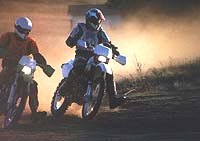















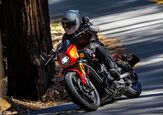
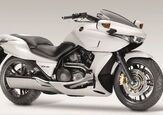
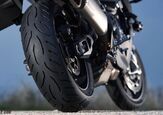
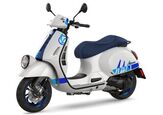
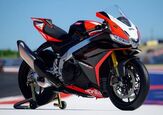
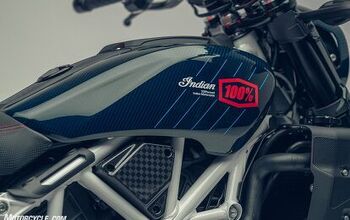

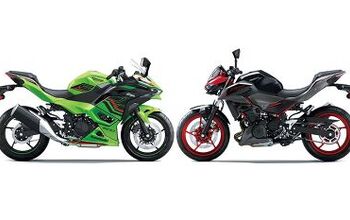
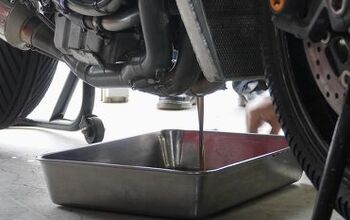
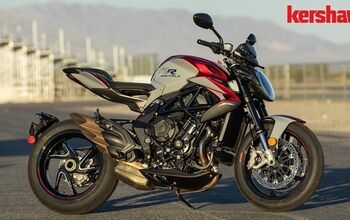
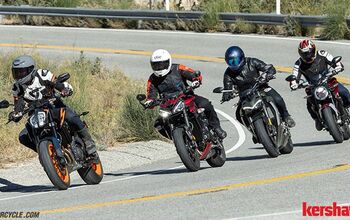
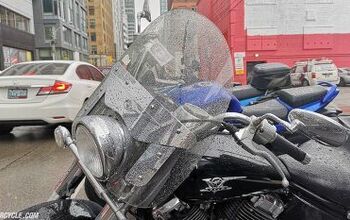
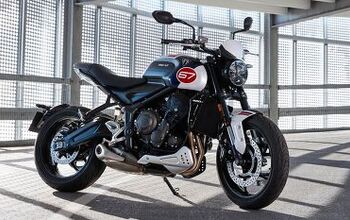
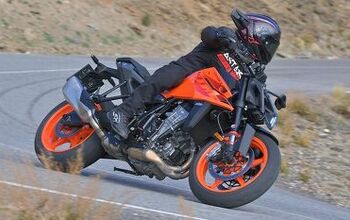


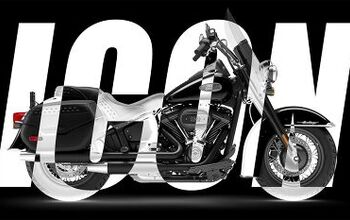
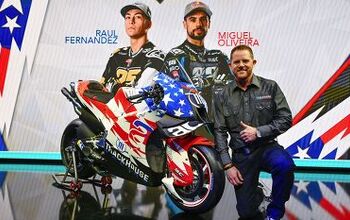

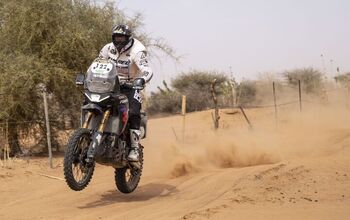
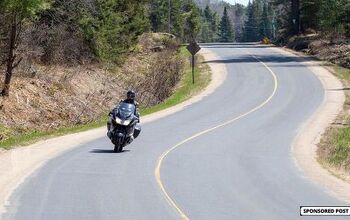
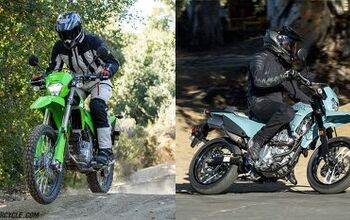

Comments
Join the conversation